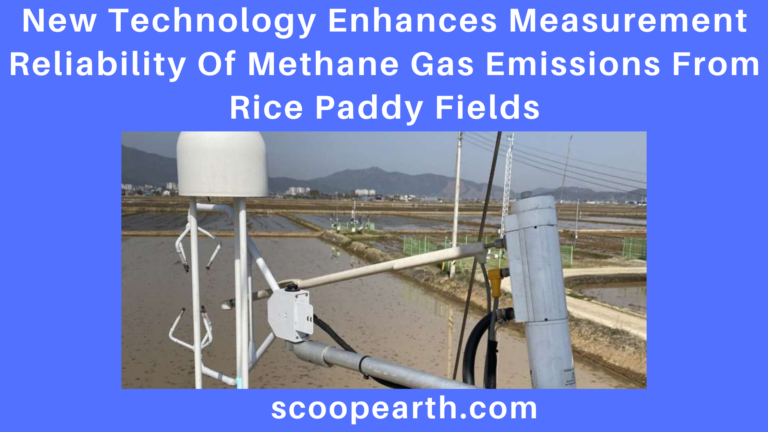Friday, 30 June 2023, Bengaluru, India
The National Center for Agro Meteorology (NCAM) and the Korea Research Institute of Standards and Science (KRISS) have collaborated on research to create a novel technology that increases the accuracy of measurements of methane emissions from rice paddies. They give an account of their efforts in agricultural and forest meteorology.
Methane has a 25 times more potent greenhouse effect per material unit than carbon dioxide. Since methane accounts for around 30% of the greenhouse gas emissions in the domestic agriculture sector, accurate measurement of methane emissions from rice paddy soil is required to create effective climate change strategies.
The chamber method is the most popular way to measure methane emissions from rice paddy soil. This technique involves regularly placing box-shaped chambers on the ground and calculating the amount of methane gathered per unit area and time. However, since continuous monitoring is not feasible and the data are restricted to the small spaces inside chambers, emission levels may need to be revised.
Methane emissions from rice paddy soil can be continuously measured in open, spacious areas using the eddy covariance approach, which overcomes the shortcomings of the chamber method. The issue is that although the measurement results may be impacted by the height of installed measurement equipment depending on soil conditions, the pertinent research and recommendations need to be revised. Because of this, the chamber method is still employed to determine the emission factors unique to each nation for entry into the UNFCCC database.
The KRISS-NCAM collaborative research team, for the first time, discovered the discrepancy in measurement findings caused by variations in observation height using eddy covariance data gathered from rice paddy soil in Cheorwon, Gangwon-do Province, in 2020 and 2021 and provided a strategy for correction.
The technology used by KRISS to calibrate both the chamber method and the eddy covariance method precisely is the foundation of this accomplishment. This is the first study in which the widely accepted standard for detecting methane emissions from rice paddy soil has been used.
The findings can be used to validate the data on national greenhouse gas emissions and improve data dependability by comparing the chamber method and the eddy covariance method. Additionally, it can help integrate data into numerous global networks for observing greenhouse gases and increase measurement accuracy.
The interdisciplinary research team intends to conduct additional research on the eddy covariance method’s possible applications in the horticulture, cattle, and forestry industries. To enable precise monitoring of greenhouse gases, they will specifically create a tailored quality management solution for intelligent agriculture.
[Source of Information: phys.org]
